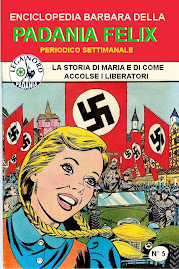Graphite Pencil Drawing Tutorial: Female Eye
E in inglese ma non importa tanto le figure non hanno bisogno del dizionario,pubblico questo post perchè so della difficoltà che talvolta incontriamo nel disegnare l'occhio umano,comunque sia una ripassata non fà male.
Pur essendo vero che nell'arte Moderna questo realismo un po leccato (...) non è preso molto in considerazione resta che vi sono situazioni in cui avremmo voluto avere una maggior capacità nel dettaglio,specie nel ritratto senza nessuna offesa per la rappesentazione dell'interiorità del soggetto.
ell 0.5 mm 2B mechanical pencil.

Step 2:
Using a soft brush dipped in small amounts of graphite powder, I cover the outline with two or three layers of tone. Any brush can be used as long as it produces a very smooth effect and fills in the tooth of the paper. I try to avoid getting tone on the highlight of the iris. If I do get any graphite there, I tap the area with a clean kneaded eraser.
Step 3:
Using a smaller version of the brush I used in the previous step, I begin forming the shapes of the eye by defining the darker areas.
Step 4:
With a kneaded eraser, I cleaned up the highlights.
Step 5:
I used a Dong-A 0.5 mm 2B mechanical pencil to draw the darkest areas like the pupil, shadow on the upper part of the iris and the crease of the upper eyelid.
Step 6:
Concentrating on the iris for now, I use a hard pencil (5H Staedtler) and fairly hard pressure to draw spokes originating from the pupil. This will keep the paper from absorbing a lot of graphite in the next stage.
Step 7:
Having used a 5H on the previous stage, I can now draw darker shades on the iris using a dark pencil (2B mechanical pencil). The reason why I use 2B is because it spreads more easily. The 5H is also to keep the tones very smooth when darker tones are added.
Step 8:
I further worked on the iris erasing and adding graphite as much as needed to create varied tones. Moving on to the white of the eye, it was also covered with a layer of 5H to create a smooth effect. Then I used a 2B mechanical pencil on the shadow areas to form the eyeball.
Step 9:
Here I began working on the skin. Using a 0.5 mm HB mechanical pencil and a light circular motion, I added tones to the upper eyelid and the surrounding skin — starting first on an area which will receive more graphite (in this case, the skin around the crease) and moving towards lighter areas. I used a shop towel and a brush to smoothen out rough spots.
Step 10:
Continued with the lower part of the skin.
Step 11:
Still continuing with the HB mechanical pencil. I’ve now added shadows to the skin. The 5H Staedtler pencil was also used on the thickness of the lower eyelid. 2B mechanical pencil was used for its darker areas.
Step 12:
To create the wrinkles on the skin, I lightly drew lines with the HB mechanical pencil and then used a kneaded eraser to create fine highlights beside each line. A paper stump and a brush were used to soften and blend the lines. The same method used on the white of the eye was also used on the tear duct. The HB was used for the eyebrow — starting with the root of each hair and lessening pressure towards the tip.
Step 13:
I always try to keep from drawing the eyelashes until the skin underneath is finished. Since the upper eyelashes will be darker than the lower eyelashes or the eyebrow, I used a Dong-A 2B mechanical pencil which is much darker than a Faber-Castell of the same grade. Again, following the direction of growth and starting from the root, lessening pressure as I come to the tip. Reflections of the eyelashes were also drawn on the highlight of the iris.
Step 14:
The lower eyelashes were drawn with the Faber-Castell 2B mechanical pencil.
Step 15:
The final eye. Finishing touches were made and some of the highlights on the lower eyelid were dulled a little. I hope you find these steps and images informative and helpful.











e na parola a fare questo disegno e difficilissimo!!!!!
RispondiEliminaNon ti arrendere,
RispondiEliminatieni la mano leggera leggera,
il tono,il colore della matita quasi impercettibile all'inizio e poi via via piu pesante,vedrai che dopo qualche tentativo sarai riuscito se non a fare di meglio sicuramente a superare te stesso!
Ti occorre una buona carta,non troppo liscia...
Dimenticavo...
RispondiEliminaCon i polpastrelli strofinando colora il fondo del foglio
di grigio tranne la parte bianca della pupilla.
Auguri
è molto difficile da eseguire anche perchè
RispondiEliminaforse non uso matite giuste
gradirei se qualcuno midasse dei suggerimenti
grazie ciao VALERIO da TORINO
Ciao Valerio,
RispondiEliminain quanto alle matite potrebbero andare bene anche le comunissime caran d'ache che trovi qui:
http://www.amicucci.it/colori.aspx?c=9&s=181,
cerca una gradazione tonale dello stesso colore che varia impercettibilmente e in più vai leggerissimo con la mano e ci arriverai,non certo al primo colpo ovvio,
ma con un po di pazienza...
Tutto stà comunque nella qualità dei colori,il resto viene da solo ma con la mano leggera come se accarezzi il culetto di un bebè!
Dimenticavo,un trucco valido per tutte le tinte,il velo,la tecnica del velo,la fai con il polpastrello delle dita,strofina la passata impercettibile di colore e vedrai.
RispondiElimina